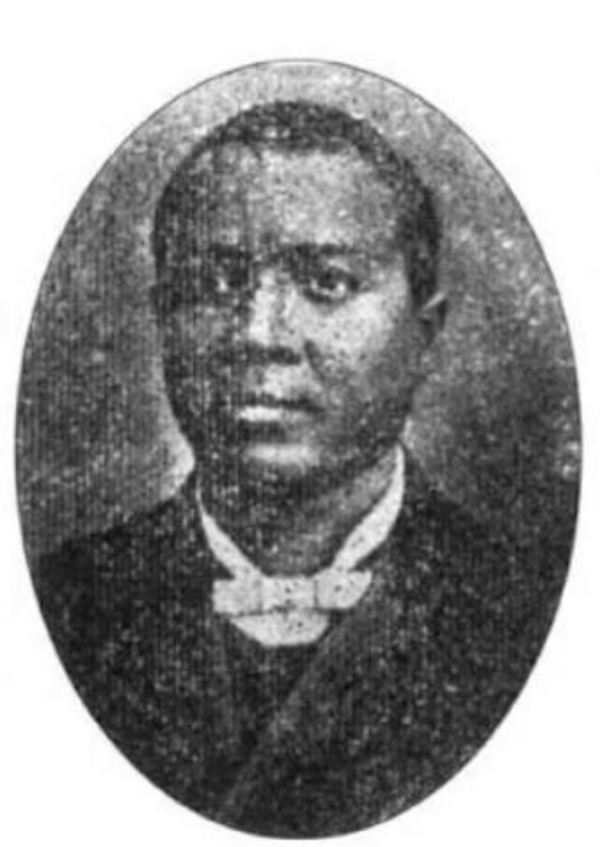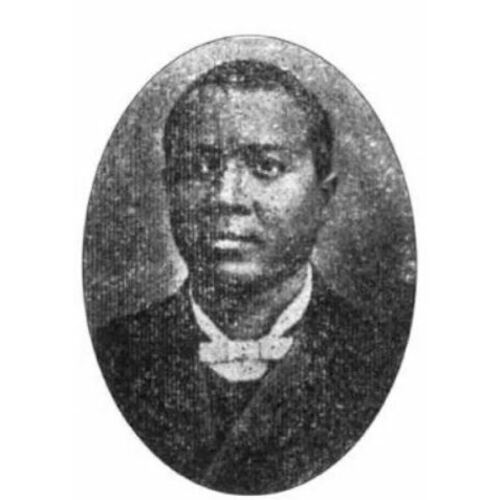
Source: Link
DISNEY, RICHARD RANDOLPH, Methodist minister, bishop, and editor; b. 24 June 1830 in North East, Md, son of Henry Disney and Rebecca —; m. Sarah Elizabeth —; d. 20 April 1891 in Baltimore, Md.
Richard Randolph Disney was a free-born black, although his parents had known slavery. While working in Baltimore he felt called to preach, and he sought higher education at a seminary run by the Reverend Samuel Osgood at Springfield, Mass. During his training Disney supported himself by working as a barber. In 1857 he was licensed to preach by the African Methodist Episcopal Church, which subsequently ordained him deacon and elder. The AMEC had been formed in 1816 when a number of black congregations banded together under the leadership of Richard Allen, a Philadelphia preacher, and by the mid 1850s it had seven conferences in the United States. AMEC preachers began to work in Upper Canada in 1834, and a conference was formed in 1840.
In 1857 Disney came to Upper Canada to minister to the many blacks who had sought refuge there from slavery in the years prior to the Civil War. He was enlisted at Chatham by Bishop Willis Nazrey of the newly formed British Methodist Episcopal Church. After the Fugitive Slave Act had been passed in the United States in 1850 some ex-slave preachers in the Canadas had been fearful of attending conferences south of the border, and in 1856 most of the AMEC churches in Upper Canada successfully petitioned the parent body to be allowed to form an autonomous church. They chose the name British Methodist Episcopal Church. Nazrey, an AMEC bishop, agreed to become the first bishop.
From 1857 Disney served in several pastorates, including Peel Township, Windsor, Hamilton, and Toronto. At the same time he rose to prominence as the denomination’s book steward and editor of its publication, the Missionary Messenger. He was general secretary of the BMEC conference in 1864. When Nazrey died in 1875, Disney was chosen as his successor, and he was ordained by an AMEC bishop that year. His administrative area consisted of Ontario, Nova Scotia, Bermuda, the West Indies, and British Guiana (Guyana). Disney was much involved in promoting mission work in the Caribbean, and in 1876 he indicated that he planned to spend six months visiting the missions there. In 1879, authorized to raise funds for an educational institution for the church, Disney visited Britain with a youthful choral group, patterned after the famous Jubilee Singers of Fisk University and using that name. However, other such groups had preceded them, and he reported that receipts barely covered costs.
By the end of the 1870s the BMEC had 56 congregations with about 3,100 members, the bulk of the latter being in the Danish West Indies and British Guiana. Because mission work outside Canada had overtaxed the church’s financial resources, in 1880 Disney began negotiations towards reunion with the AMEC. The reunion was effected that year, and it was overwhelmingly ratified at a BMEC convention held at Hamilton in June 1881. A referendum showed that although a majority in Ontario was opposed, 86 per cent of the membership was in favour. Disney was accepted as an AMEC bishop and was assigned to its Tenth Episcopal District, a region embracing his former territory as well as some of the AMEC churches in Canada which had not joined the BMEC.
Reunification appeared to have been a triumph for Disney, but trouble soon occurred. A majority of the Ontario churches and preachers, led by the Reverend Walter Hawkins of Chatham, sought to re-establish the BMEC, fearing the loss of their distinctive identity and perhaps feeling that the Caribbean groups had exercised too much influence on the reunification question. In 1886 this group held an ecclesiastical council at Chatham, at which it was claimed that Disney had defected to the AMEC. At a subsequent general conference that year the BMEC was reconstituted. The conference deposed Disney, agreeing to “erase his name and ignore his authority, and cancel his official relationship as bishop.” The conference minutes also refer to a court case instigated by Disney which reached the High Court of Chancery in Britain, but records of this case have not been located. The reconstituted BMEC elected Hawkins as its general superintendent, avoiding the title of bishop for several years.
Disney continued with what was left of his AMEC district until 1888, when he was transferred to the Eighth District, with churches in Arkansas and Mississippi. He lived in Greenville, Miss., until stricken by malaria, and he then went to Baltimore, where he died in his 61st year. His body was buried in Chatham near the grave of Nazrey. He left no children, and his widow later married a Greenville lawyer, C. J. Jones. She was buried beside the bishop in 1907.
Disney was eulogized at the AMEC conference of 1891 as “courageous, thrifty and persevering, of genial spirit and suave manners.” Although a bright star among black leaders in Canada, he had been unable to unite the scattered black Methodist churches in the country. By 1898 the BMEC had 27 preaching points and 25 preachers, the AMEC 130 churches in Canada. The two denominations continue their separate work to this day. Disney is remembered by churches named after him in Baltimore and Greenville.
The British Methodist Episcopal Church of Toronto holds the “Journal of the proceedings of the Ecclesiastical Council of the B.M.E. Church, held in the B.M.E. Chapel on Princess St., Chatham, 1886”; the volume also contains the minutes of the General Conference, Windsor, June 1886.
S. J. C. Edwards, From slavery to a bishopric, or the life of Bishop Walter Hawkins of the British Methodist Episcopal Church, Canada (London, 1891). Christian Recorder (Philadelphia), 30 April 1891. R. R. Ball, “The British Methodist-Episcopal Church of Canada,” Canada, an encyclopædia (Hopkins), 4: 136–37. J. C. Coleman, “The African Methodist-Episcopal Church,” Canada, an encyclopædia, 4: 135–36. Cyclopædia of Canadian biog. (Rose and Charlesworth), 1: 456. The encyclopedia of world Methodism, ed. N. B. Harmon et al. (2v., Nashville, Tenn., 1974). R. W. Winks, The blacks in Canada: a history (London and New Haven, Conn., 1971).
Cite This Article
J. William Lamb, “DISNEY, RICHARD RANDOLPH,” in Dictionary of Canadian Biography, vol. 12, University of Toronto/Université Laval, 2003–, accessed March 28, 2025, https://www.biographi.ca/en/bio/disney_richard_randolph_12E.html.
The citation above shows the format for footnotes and endnotes according to the Chicago manual of style (16th edition). Information to be used in other citation formats:
| Permalink: | https://www.biographi.ca/en/bio/disney_richard_randolph_12E.html |
| Author of Article: | J. William Lamb |
| Title of Article: | DISNEY, RICHARD RANDOLPH |
| Publication Name: | Dictionary of Canadian Biography, vol. 12 |
| Publisher: | University of Toronto/Université Laval |
| Year of revision: | 1990 |
| Access Date: | March 28, 2025 |



